The gender gap in immigrant employment in Sweden

According to the Swedish official statistics office, in 2019 there were around 2 million foreign-born people living in Sweden, amounting to approximately almost 20% of Sweden’s population (SCB: 2019). Among these, 50% are foreign-born men and 50% are foreign-born women (SCB:2019). Although from a statistical viewpoint there are almost the same number of migrant men and women in Sweden, their rates of labour market participation differ greatly. This socio-economic gap appears to be even wider when taking into the picture Swedish-born people, both men and women. Currently, foreign-born people’s labour market participation and employment rate is 16.5% lower than that of Swedish-born people (Ekonomifakta 2020).
According to a report published by the Swedish Public Employment Agency (Arbetsförmedlingen 2020:5), 27% of foreign-born women between the ages of 16-64 are unemployed: this indicator is much higher than the unemployment rate of Swedish-born women (16%) and men (14%), as well as foreign-born men (16%). Due to the higher unemployment rate of immigrant women compared to other groups, several studies have been carried out on the labour market integration of immigrant women (FORES 2020; Arbetsförmedlingen 2017; Abbasian & Bildt 2009; Nordregio 2018), pointing out that the most common barriers to entering the Swedish labour market include linguistic barriers; lack of network access; intersectional discrimination on behalf of employers and the host population; difficulties in validating educational credentials and obtaining recognition of previous skills/experiences; difficulties in combining work and family responsibilities; legal status barriers and residency issues (Abbasian & Bildt 2009:7; Nordregio 2018:19).
At the same time, while on one hand economic integration is seen as the most important pathway for immigrant integration and inclusion into society (Webster & Haandrikman 2020:1), on the other, Sweden still has one the highest employment gaps between natives and immigrants in Western countries, with unemployment and low wages being particularly common among immigrant women (Webster & Haandrikman 2020:1). In conclusion, we can state that the gender gap in immigrant employment is wide, and in order for it to be closed, there is the need for more gender-equal and inclusive labour market policies.
References
Webster, N. A., & Haandrikman, K. (2020). Exploring the role of privilege in migrant women’s self-employment. Entrepreneurship Theory and Practice.
Nordregio (2018), “Enhanced Labour Market Opportunities for Immigrant Women”, edited by Hjördís Rut Sigurjónsdóttir, Mari Wøien and Markus Meckl, NORDREGIO REPORT 2018 n3.
Abbasian, S. & Bildt, C. (2009), Empowerment through entrepreneurship – a tool for integration among immigrant women? Jönköping International Business School, CISEG working paper series nr 6.
Arbetsförmedling (2017), “Integration på svensk arbetsmarknad – ett internationellt perspektiv”, Working paper 2017: 3 by Maria Cheung & Kristin Hellström.
FORES (2020), “Framtidens chefer: nyanlända och utrikes födda kvinnors entreprenörskap”.
Ekonomifakta (2020), “Sysselsättningsgap – internationellt”, https://www.ekonomifakta.se/Fakta/Arbetsmarknad/Integration/Sysselsattningsgrad—internationellt/
Statistikmyndigheten – SCB (2019), “Utrikes födda I Sverige”, https://www.scb.se/hitta-statistik/sverige-i-siffror/manniskorna-i-sverige/utrikes-fodda/
Image source: https://www.thediversitycouncil.com/wef-global-gender-gap-report-2018/


